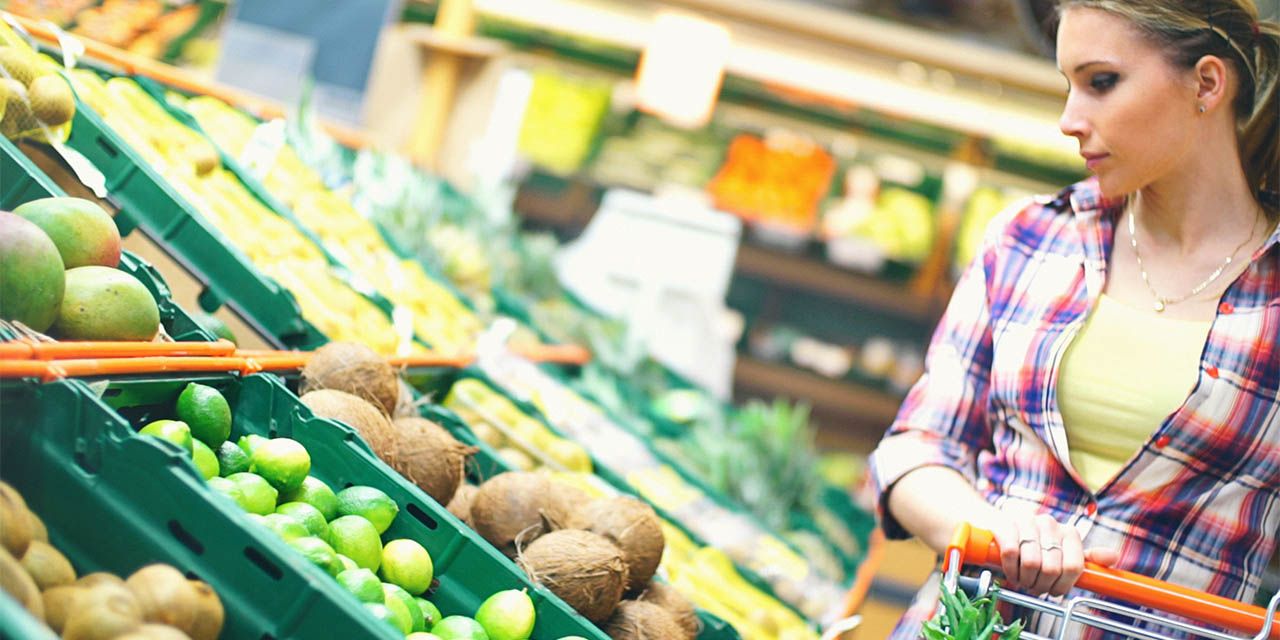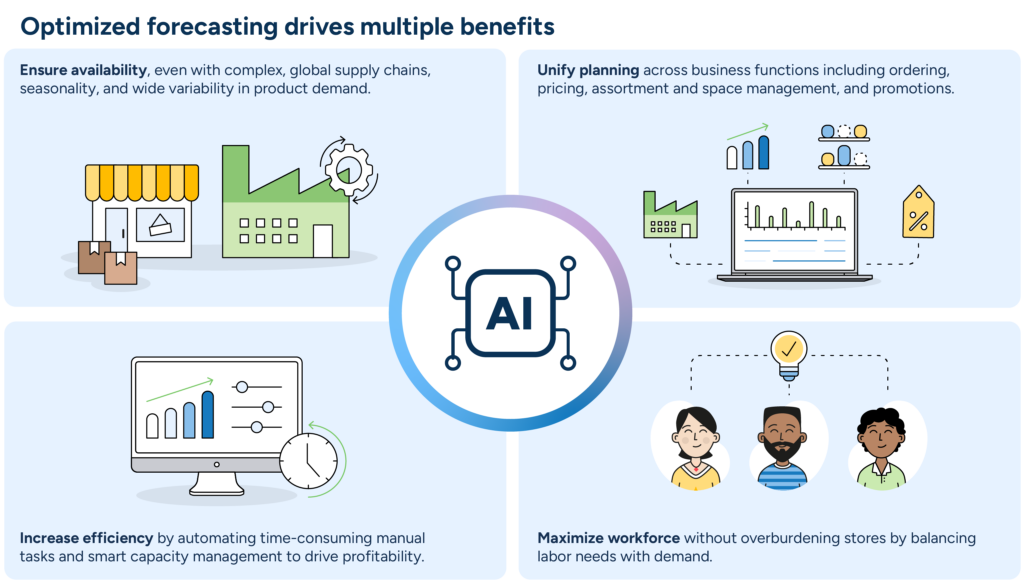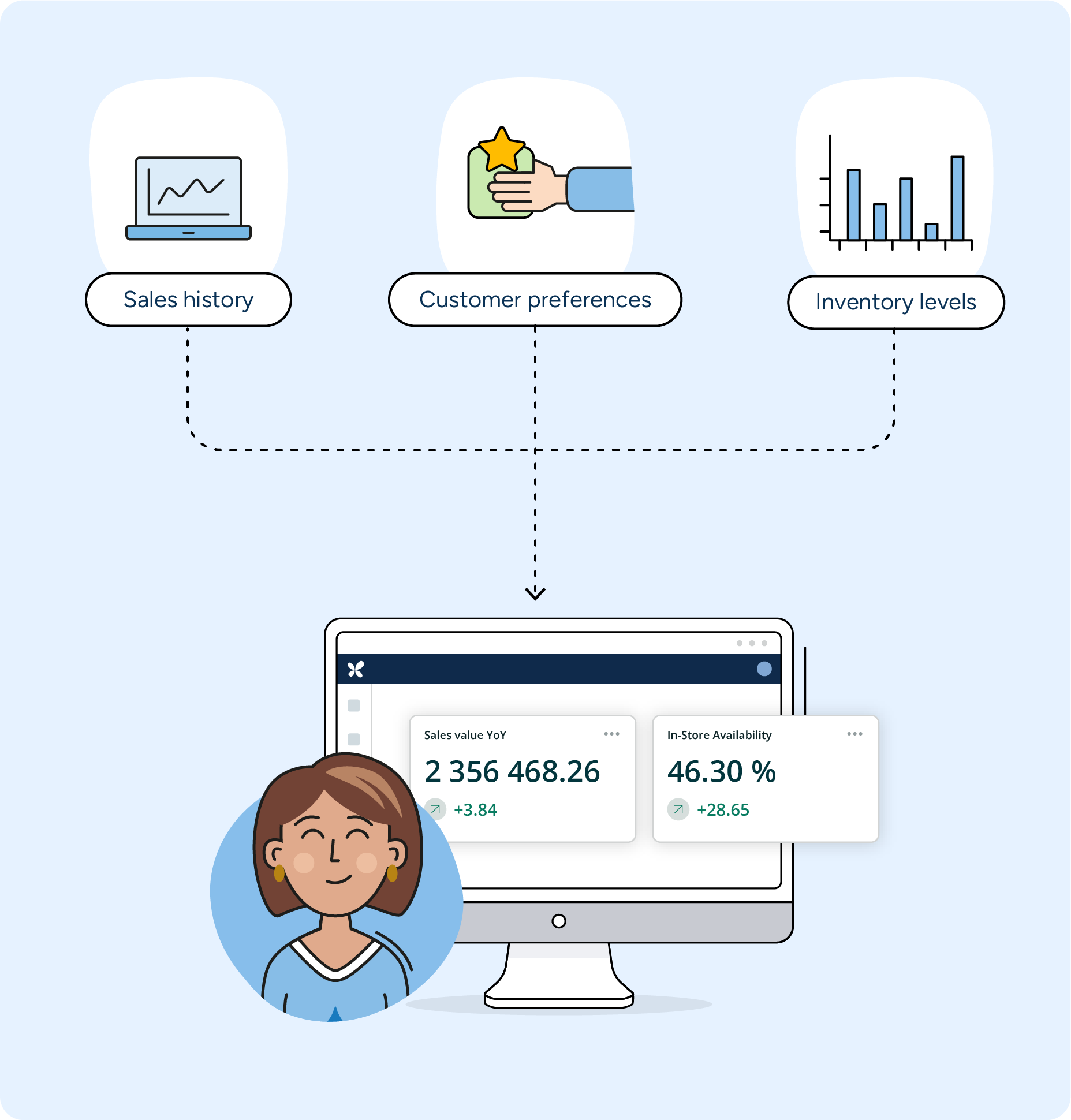Evolving from transactional to optimization in grocery: Part one – Key areas for optimization
Sep 25, 2024 • 5 min
The hard truth about grocery retail is that you’re never “done” updating your systems. New technology is always appearing to help make your stores more efficient, streamlined, and transparent. You need to be at the forefront of advancements that can help you reach new levels of efficiency and profitability.
Grocers have invested heavily in transactional systems over the past 10-20 years. These include advanced merchandising systems, ERP (Enterprise Resource Planning) systems, POS (Point of Sale) systems, and e-commerce solutions. They help stores function, but they don’t usually offer optimization capabilities. Transactional investments are primarily made to mitigate risk rather than achieve high ROI, so it’s essential to layer optimization capabilities with high ROI to help offset investments in the foundational systems.
Transactional vs. Optimized retail systems
By moving from transactional to optimized systems, grocers can unlock new levels of efficiency, reduce waste, and better meet customer needs.
Transactional
Transactional systems are the baseline technology that grocers use to run their stores efficiently. These systems are foundational for business operations today and are primarily transactional in nature. They include essential tools for managing financials, sending purchase orders, creating and updating items, receiving goods, tracking employee hours, and viewing organizational charts.
In short, transactional systems are the backbone of grocery retail operations, encompassing a range of tools and technologies designed to handle the day-to-day activities of running retail stores. Still, they don’t necessarily help you get ahead.
While transactional tools are indispensable for day-to-day operations, many grocers stop at this transactional step when they should be moving on to optimize their stores. With technological advancements, we can now predict customer needs and make data-driven decisions that increase store performance and customer satisfaction. This is important because optimization is the path to improving sales and the bottom line – in other words, achieving measurable ROI.
Optimized
Once you have established a strong foundation of transactional systems, it’s time to look to tools that offer a strong ROI. These optimized solutions leverage advanced technologies to enhance demand forecasting, inventory management, and replenishment processes, providing significant benefits beyond the basic functionalities of transactional systems.
By transitioning to an optimized system, grocers can finally process and use the wealth of data collected through their transactional systems to make smarter, data-driven decisions. Before now, it’s been too overwhelming and time-consuming to delve into the data. This evolution allows for more precise demand forecasting, efficient inventory management, and streamlined replenishment processes.
Optimization solutions build on the foundation of transactional systems and play a crucial role in transforming raw data into actionable insights. Look for solutions that utilize advanced algorithms and machine learning to analyze patterns and predict future trends, enabling you to respond proactively to market demands. By integrating optimization solutions, you can also automate routine tasks, reduce manual interventions, and focus on strategic initiatives that drive growth.
Critical areas for grocery optimization
Forecasting and assortment are pivotal areas for grocery optimization because they directly impact inventory management, customer satisfaction, and profitability. Accurate forecasting increases demand prediction accuracy, reducing stockouts and excess inventory.
Optimizing assortment involves curating the product mix to meet customer preferences and seasonal trends, which enhances the shopping experience and drives sales. Together, these areas help maintain optimal inventory levels, reduce waste, and respond swiftly to market changes, ultimately leading to improved operational efficiency and higher profitability.
Prioritizing optimization solutions
Forecasting, in all its forms, is a critical component of optimizing grocery store operations. While forecasting and inventory replenishment are essential for ensuring that shelves are stocked with the right products at the right time, forecasting can drive significant improvements in several other areas.

One key area is scenario planning for pricing. By leveraging advanced forecasting models, grocers can predict how different pricing strategies will impact sales and profitability. Pricing decisions can be made using insights on anticipated customer demand, competitive actions, and market trends. Effective scenario planning can help grocers maximize revenue, improve margins, and respond more agilely to market changes.
Another crucial area is workforce optimization. Accurate workload forecasting enables grocers to align their staffing levels with actual labor demand, ensuring they have the right number of employees scheduled for peak times and reducing overstaffing during slower periods. Optimizing staffing not only helps manage labor costs but also enhances customer service by ensuring enough staff members are available to assist customers during busy times. Workforce optimization can also improve employee satisfaction by providing more predictable and balanced work schedules.
In addition to inventory, pricing, and workforce, forecasting can also be applied to other areas, such as promotional planning, supply chain logistics, and customer behavior analysis. By integrating these various forms of forecasting, grocers can create a comprehensive optimization strategy that enhances overall operational efficiency, reduces costs, and improves the shopping experience for customers.
Assortment optimization
Assortment optimization involves removing items that do not add enough value to your store or are not selling fast enough and then deciding which items to add in their place. This process requires extensive forecasting of customer behavior.
For example, if you have 12 different types of 8-ounce honey in your store and only three sell well, removing the bottom three out of those 12 is unlikely to significantly impact your sales. However, if you only carry one type of paprika in your store and remove it, no substitute is available. This could frustrate customers and drive them to shop elsewhere.
Assortment optimization can significantly affect customer count and sales. It requires careful forecasting to predict customer behavior and determine the impact of removing certain items, finding substitute items, and deciding when items can be removed without affecting the overall productivity of the category.

The next steps in grocery optimization
Optimizing grocery operations involves going beyond transactional systems and leveraging advanced technologies to enhance efficiency and customer satisfaction. By focusing on key areas such as forecasting and assortment optimization, grocers can significantly improve their inventory management, reduce waste, and better meet customer needs.



